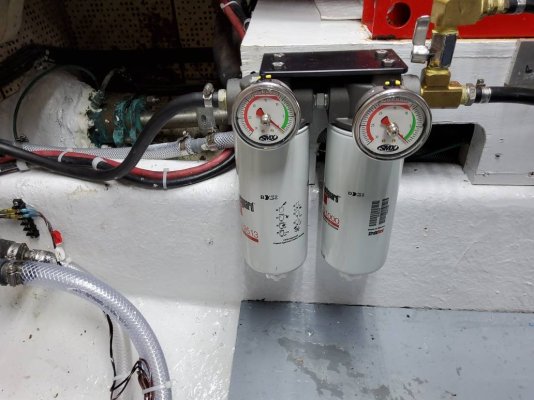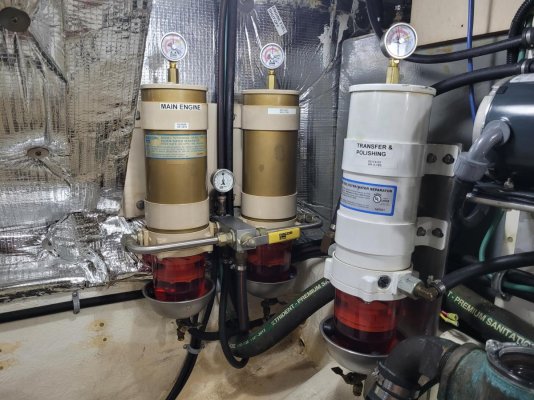My Racors work for me but I'd rather have spin ons if I had to change filters in a sea way. I clogged filters twice right after I bought the boat. It hadn't been out to sea for a couple years and when I was bringing it home from San Diego to Long Beach that sloshing around clogged the port engine filter. I was only an hour out of Long Beach so I continued in on one engine. Dangerous I know but I do have an anchor. I don't remember when I clogged the starboard engine and yes I changed both filters when the port engine clogged first. Later I had to replace my centerline fuel tank and I installed access ports in my aft lazzarette tank and had the tank cleaned and fuel polished. I installed the three needle Parker T-Handle vac gauges and never had a problem since. Check the gauge, change when indicated. I don't spill much if any fuel with a change. By the way, when I first bought the boat I bought a case of primary filters. I still have most of them. I put a plastic bowl under the Racor, open the drain, spin off the top, close the drain, pull the filter, let it drain a bit, put it in a bucket, press in a new filter, change the supplied seals, pour some clean diesel on top, seal the top, start the engine and let her run. Easy at the dock, not so much in a hot engine room while bouncing at sea. And...who is driving the boat while I do that? I kinda like the idea of draining a little fuel, spin off the filter, put it in the bucket, pore some clean fuel in the filter, spin on the filter, start the engine.




